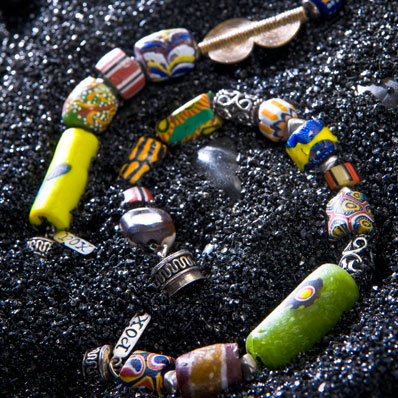Many of my fellow jewelers and craftsmen/women often ask about my obsession with trade beads. I use them in nearly every piece of jewelry I create, so it leads many to wonder, what is the significance of trade beads? Why use trade beads? Well, here are my top reasons for using trade beads in my jewelery.
-
Trade Beads are handmade, and made with love.
Unlike most of the beads in the market today, primarily dominated by Indian and Chinese beads, trade beads are each made by hand, with love, the old fashioned way. It feels nice knowing you are wearing something that was not made by a machine or robot, but rather, by a fellow human 🙂
-
Each bead is one of a kind.
Because trade beads are handmade, every single bead is unique and one of a kind. There are no two beads that are exactly the same! This is particularly noticeable when shopping for Millefiori beads and Venetian trade beads.
-
Wearing trade beads is like wearing a piece of history.
Trade beads date back as some of the oldest beads in modern history. Most trade beads have traveled at least three continents, and have been possessed by multiple owners, especially old trade beads. There’s nothing like wearing a piece of history!
-
Shopping for trade beads is fun!
Shopping for trade beads is unlike shopping for most of other types of beads. Because every bead is handmade and one of a kind, shopping never gets old. You never see the same thing twice.
-
Trade beads are usually part of the fair trade.
Most trade beads are considered “fair trade beads“, meaning the craftsmen, craftswomen, and artisans involved in creating the beads were not exploited in the process of bringing these beads to you. They are paid the amount they deserve. You know that when you purchase fair trade beads, you are helping to improve the lives of the people who made these beads for you.
Of course, these are only five of the many reasons why I love to use trade beads when creating jewelry. Their significance is unprecedented, and they are the most cultured of beads.
Why do you use trade beads in your jewelry? Post a comment below and share!
